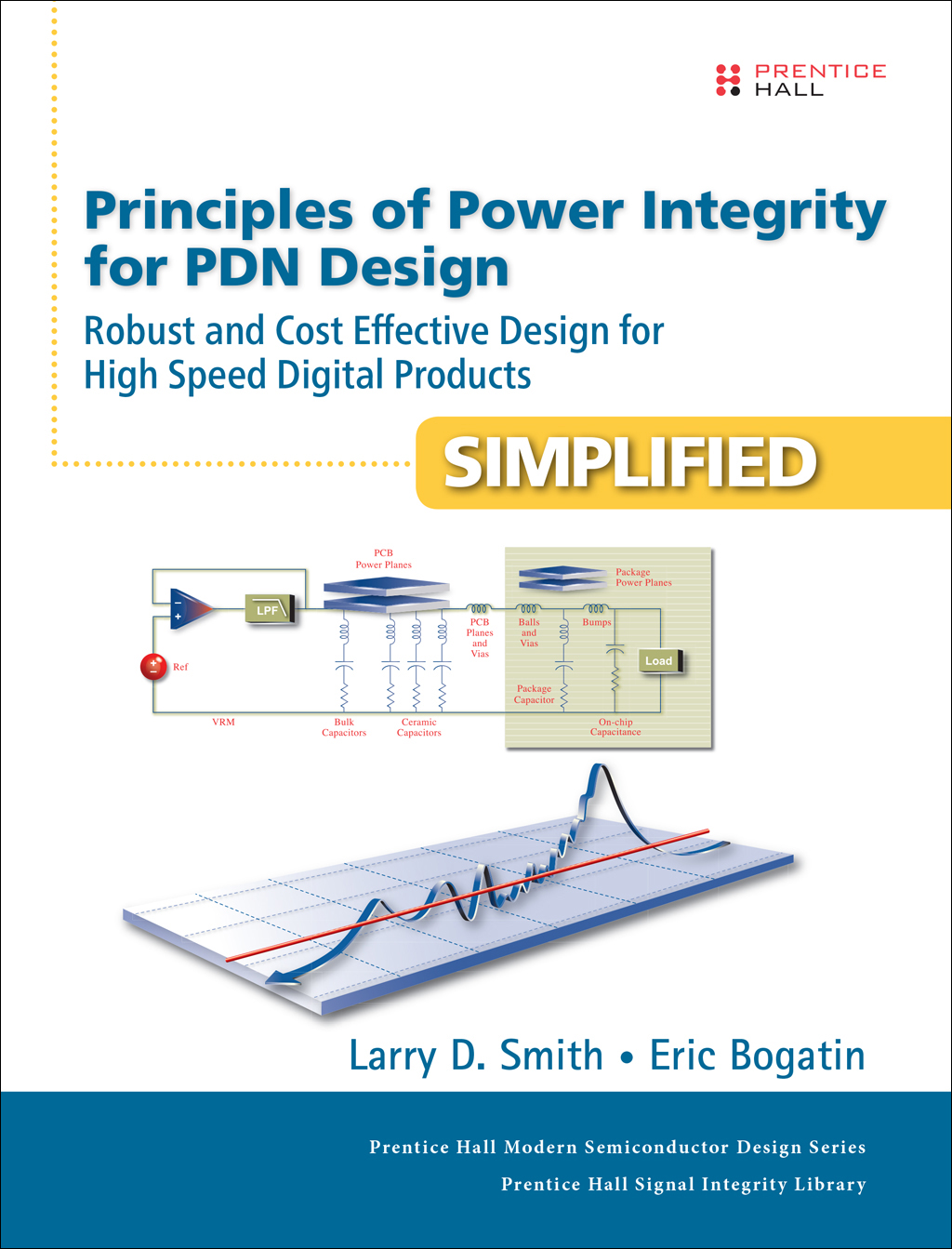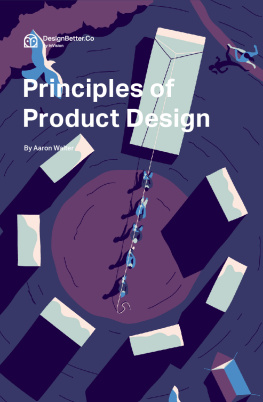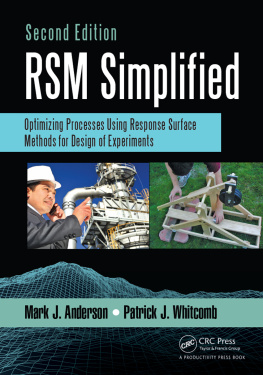Larry D. Smith - Principles of Power Integrity for PDN Design - Simplified
Here you can read online Larry D. Smith - Principles of Power Integrity for PDN Design - Simplified full text of the book (entire story) in english for free. Download pdf and epub, get meaning, cover and reviews about this ebook. year: 2017, publisher: Prentice Hall, genre: Science / Computer. Description of the work, (preface) as well as reviews are available. Best literature library LitArk.com created for fans of good reading and offers a wide selection of genres:
Romance novel
Science fiction
Adventure
Detective
Science
History
Home and family
Prose
Art
Politics
Computer
Non-fiction
Religion
Business
Children
Humor
Choose a favorite category and find really read worthwhile books. Enjoy immersion in the world of imagination, feel the emotions of the characters or learn something new for yourself, make an fascinating discovery.

- Book:Principles of Power Integrity for PDN Design - Simplified
- Author:
- Publisher:Prentice Hall
- Genre:
- Year:2017
- Rating:3 / 5
- Favourites:Add to favourites
- Your mark:
- 60
- 1
- 2
- 3
- 4
- 5
Principles of Power Integrity for PDN Design - Simplified: summary, description and annotation
We offer to read an annotation, description, summary or preface (depends on what the author of the book "Principles of Power Integrity for PDN Design - Simplified" wrote himself). If you haven't found the necessary information about the book — write in the comments, we will try to find it.
Principles of Power Integrity for PDN Design - Simplified — read online for free the complete book (whole text) full work
Below is the text of the book, divided by pages. System saving the place of the last page read, allows you to conveniently read the book "Principles of Power Integrity for PDN Design - Simplified" online for free, without having to search again every time where you left off. Put a bookmark, and you can go to the page where you finished reading at any time.
Font size:
Interval:
Bookmark:

EPUB is an open, industry-standard format for e-books. However, support for EPUB and its many features varies across reading devices and applications. Use your device or app settings to customize the presentation to your liking. Settings that you can customize often include font, font size, single or double column, landscape or portrait mode, and figures that you can click or tap to enlarge. For additional information about the settings and features on your reading device or app, visit the device manufacturers Web site.
Many titles include programming code or configuration examples. To optimize the presentation of these elements, view the e-book in single-column, landscape mode and adjust the font size to the smallest setting. In addition to presenting code and configurations in the reflowable text format, we have included images of the code that mimic the presentation found in the print book; therefore, where the reflowable format may compromise the presentation of the code listing, you will see a Click here to view code image link. Click the link to view the print-fidelity code image. To return to the previous page viewed, click the Back button on your device or app.
Larry D. Smith
Eric Bogatin

Boston Columbus Indianapolis New York San Francisco Amsterdam
Cape Town Dubai London Madrid Milan Munich Paris Montreal
Toronto Delhi Mexico City So Paulo Sydney Hong Kong Seoul
Singapore Taipei Tokyo
Many of the designations used by manufacturers and sellers to distinguish their products are claimed as trademarks. Where those designations appear in this book, and the publisher was aware of a trademark claim, the designations have been printed with initial capital letters or in all capitals.
The authors and publisher have taken care in the preparation of this book, but make no expressed or implied warranty of any kind and assume no responsibility for errors or omissions. No liability is assumed for incidental or consequential damages in connection with or arising out of the use of the information or programs contained herein.
For information about buying this title in bulk quantities, or for special sales opportunities (which may include electronic versions; custom cover designs; and content particular to your business, training goals, marketing focus, or branding interests), please contact our corporate sales department at or (800) 382-3419.
For government sales inquiries, please contact .
For questions about sales outside the U.S., please contact .
Visit us on the Web: informit.com/aw
Library of Congress Control Number: 2017930426
Copyright 2017 Pearson Education, Inc.
All rights reserved. Printed in the United States of America. This publication is protected by copyright, and permission must be obtained from the publisher prior to any prohibited reproduction, storage in a retrieval system, or transmission in any form or by any means, electronic, mechanical, photocopying, recording, or likewise. For information regarding permissions, request forms and the appropriate contacts within the Pearson Education Global Rights & Permissions Department, please visit www.pearsoned.com/permissions/.
ISBN-13: 978-0-13-273555-1
ISBN-10: 0-13-273555-5
1 17
Publisher
Mark Taub
Editor-in-Chief
Greg Wiegand
Acquisitions Editor
Kim Boedigheimer
Managing Editor
Sandra Schroeder
Senior Project Editor
Lori Lyons
Production Manager
Dhayanidhi
Copyeditor
Paula Lowell
Indexer
Erika Millen
Proofreader
Sam Sunder Singh
Editorial Assistant
Olivia Basegio
Cover Compositor
Chuti Prasertsith
Compositor
codeMantra
The creation of this book took more than the 5,000 person-hours of writing, simulating, and editing and more than 500 hours of conference calls. We could not have done this without the unfailing support and confidence from our wives, Susan and Marty, who kept the faith and gave us encouragement even during the long hours of writing, rewriting, and more rewriting.
Larry would also like to dedicate this book to his father, who was his undergrad Professor of Electrical Engineering.
Power integrity is a confusing topic in the electronics industrypartly because it is not well-defined and can encompass a wide range of problems, each with their own set of root causes and solutions. There is universal agreement that the field of power integrity includes everything from the voltage regulator module (VRM) to the on-die core power rails and on-die capacitance.
Between the VRM and die are interconnects on the package and board, which often carry discrete capacitors with their associated mounting inductance. The power distribution network (PDN) refers to all interconnects (usually inductive), the intentional energy storage devices (usually capacitive), and loss mechanisms (damping) between the VRM and the on-die Vdd-Vss power rails.
Power integrity is all about the quality of the power seen by the circuits on the die. What about noise created on the board power and ground planes by signals passing through cavities? Is this a signal integrity problem or a power integrity problem? Is the voltage noise generated by I/O switching currents and seen by the on-die Vcc and Vss rails a power integrity or signal integrity problem? Current that comes in through the common package lead inductance, which is ultimately connected to the VRM, generates this noise, which is sometimes referred to as switching noise or ground bounce.
This gray area between signal and power integrity has a profound impact on solutions that are offered for power integrity problems. Adding decoupling capacitors on the board often provide a solution for reducing Vdd core noise but seldom improve the cavity noise induced by high bandwidth signals. In general, board-level capacitors offer little or no improvement to return-plane bounce noise. In some cases, the parallel resonances they create can actually increase the cavity-to-signal cross talk.
The first step to solving a problem is to clearly identify the problem and then correctly identify its root cause. A well-defined problem is often only a few steps away from a solution. Efficient solutions to problems are developed based on the actual root cause.
This book focuses on the specific power integrity problems related to noise on the Vdd rail, which powers the on-die core logic and enables it to perform functions. The gates powered by the on-die Vdd rail switch signals that communicate to other gates on the same die, and do not necessarily travel off die as I/O. Transient current caused by core activity causes noise on the Vdd rail, which is sometimes referred to as self-aggression. The principles, analysis methods, and recommended best design practices to minimize this problem can also apply to other signal integrity, power integrity, and EMI problems; however, the focus in this book is on self-aggression of the Vdd rail.
Font size:
Interval:
Bookmark:
Similar books «Principles of Power Integrity for PDN Design - Simplified»
Look at similar books to Principles of Power Integrity for PDN Design - Simplified. We have selected literature similar in name and meaning in the hope of providing readers with more options to find new, interesting, not yet read works.
Discussion, reviews of the book Principles of Power Integrity for PDN Design - Simplified and just readers' own opinions. Leave your comments, write what you think about the work, its meaning or the main characters. Specify what exactly you liked and what you didn't like, and why you think so.








